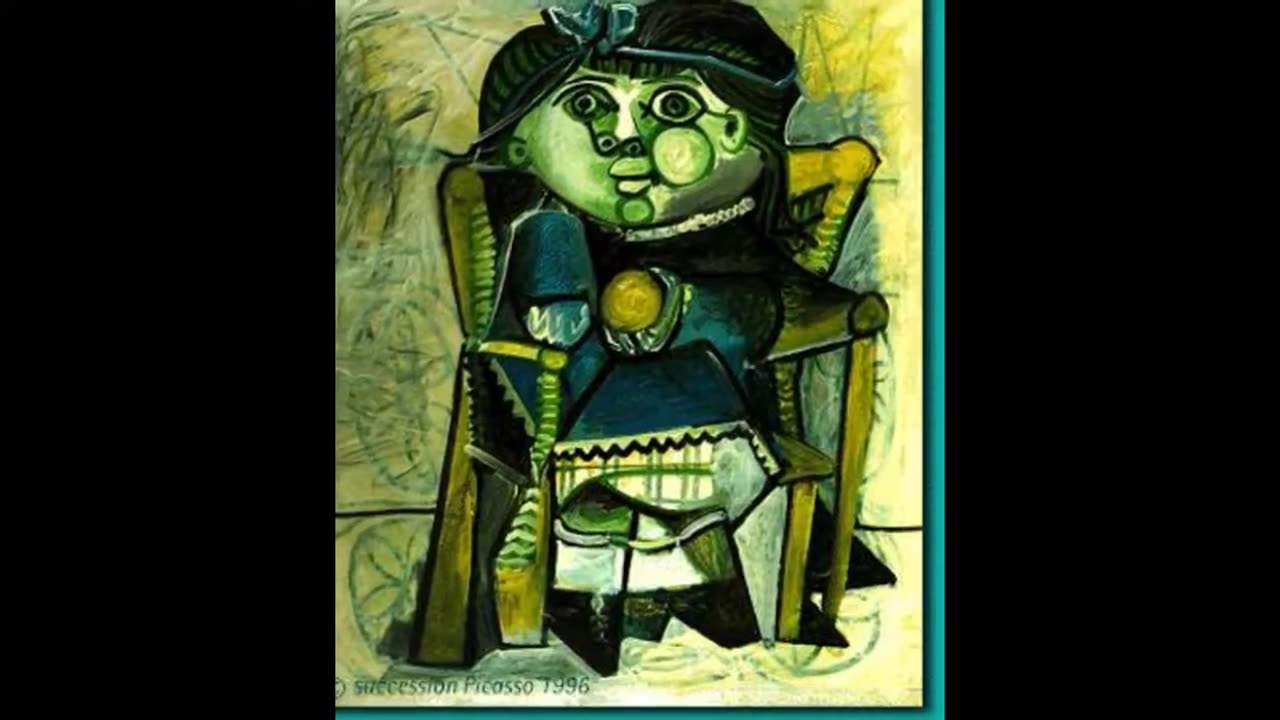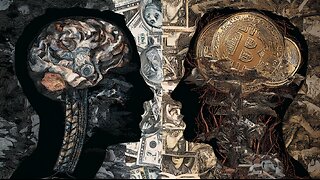Premium Only Content

Pablo PICASSO 1950 - 1954 Fine Art Paintings and Prints Slideshow
Enjoy a captivating slideshow showcasing the fine art paintings and prints of Pablo Picasso between the years 1950 to 1954.
Not only was Pablo Picasso one of the most influential painters and artists of his time, he is also one of the most recognized figures of the 20th century, thanks to the work he created during his career. Born in Malaga, Spain, in October 1881, he was the first child born in the family. His father worked as an artist, and was also a professor at the school of fine arts; he also worked as a curator for the museum in Malaga.
Early life
Pablo Picasso studied under his father for one year, then went to the Academy of Arts for one year, prior to moving to Paris. In 1901, he went to Paris, which he found as the ideal place to practice new styles, and experiment with a variety of art forms. It was during these initial visits, which he began his work in surrealism and cubism style, which he was the founder of, and created many distinct pieces which were influenced by these art forms.
Updates in style
During his stay in Paris, Pablo Picasso was constantly updating his style; he did work from the blue period, the rose period, African influenced style, to cubism, surrealism, and realism. Not only did he master these styles, he was a pioneer in each of these movements, and influenced the styles to follow throughout the 20th century, from the initial works he created. In addition to the styles he introduced to the art world, he also worked through the many different styles which appeared, while working in Paris. Not only did he continually improve his style, and the works he created, he is well known because he had the ability to create in any style which was prominent during the time.
Russian ballet
In 1917, Pablo Picasso joined the Russian Ballet, which toured in Rome; during this time he met Olga Khoklova, who was a ballerina; the couple eventually wed in 1918, upon returning to Paris. The couple eventually separated in 1935; Olga came from nobility, and an upper class lifestyle, while Pablo Picasso led a bohemian lifestyle, which conflicted. Although the couple separated, they remained officially married, until Olga's death, in 1954. In addition to works he created of Olga, many of his later pieces also took a centralized focus on his two other love interests, Marie Theresa Walter and Dora Maar. Pablo Picasso remarried Jacqueline Roque in 1961; the couple remained married until his death 12 years later, in 1973.
Work as a pacifist
Pablo Picasso was a pacifist, and large scale paintings he created, showcased this cry for peace and change during the time. A 1937 piece he created, after the German bombing of Guernica, was one such influential piece of the time. Not only did this become his most famous piece of art work, but the piece which showed the brutality of war, and death, also made him a prominent political figure of the time. To sell his work, and the message he believed in, art, politics, and eccentricity, were among his main selling points.
Conflicting with social views
Many things Pablo Picasso did during the 1950s, conflicted with the public. Viciousness towards his children, exaggerated virility towards women, and joining the Communist party, were some of the many scandals which he was involved in during his lifetime. Although most of the things he did were viewed negatively by a minority of the public, admirers of Pablo Picasso turned a blind eye, and still accepted him as a prominent figure in their society. Following the end of WWII, Pablo Picasso turned back towards his classic style of work, and he created the "Dove of Peace." Even though he became a member of the Communist party, and supported Stalin and his political views and rule, Pablo Picasso could do no wrong. In the eyes of his admirers and supporters, he was still a prominent figure, and one which they would follow, regardless of what wrongs he did. He was not only an influence because of the works he created, but he was also an influential figure in the political realm.
Influence outside of art
Although Pablo Picasso is mainly known for his influence to the art world, he was an extremely prominent figure during his time, and to the 20th century in general. He spread his influences to the art world, but also to many aspects of the cultural realm of life as well. He played several roles in film, where he always portrayed himself; he also followed a bohemian lifestyle, and seemed to take liberties as he chose, even during the later stages of his life. He even died in style, while hosting a dinner party in his home.
Collection of work
-
 LIVE
LIVE
Viss
1 hour ago🔴LIVE - How to Win The Battleground with Tactics, Precision, & Knowledge!
121 watching -
 LIVE
LIVE
The Mel K Show
1 hour agoMORNINGS WITH MEL K - Redefining the Threat We Face: Who are our Allies and Adversaries Really? 7-17-25
969 watching -
 40:09
40:09
The Rubin Report
2 hours agoListen to ‘The View’ Crowd Gasp as Whoopi Melts Down Over Mark Cuban’s Mild Criticism of Dems
57.5K54 -
 LIVE
LIVE
Flyover Conservatives
12 hours agoBirth Rates Too Low to Survive. The ONLY Diaper Company That Doesn’t Fund Abortions?! Texas Flood Victim Relief - Sarah Gabel and Michael Seifert, EveryLife | FOC Show
265 watching -
 DVR
DVR
The Shannon Joy Show
19 hours ago🔥🔥HUGE Win for Medical Freedom! Exclusive Interview With America’s Hero Doctor - Dr. Kirk Moore! 🔥🔥
4.83K2 -
 LIVE
LIVE
Grant Stinchfield
1 hour agoThe Biden Testimony America Deserves
142 watching -
 25:37
25:37
Rethinking the Dollar
1 hour agoThe Secret List That Could Shake the World to Its Core | Morning Check-In
3.65K -
 LIVE
LIVE
Trumpet Daily
1 hour agoTrumpet Daily LIVE - July 17, 2025
462 watching -
 DVR
DVR
Bannons War Room
4 months agoWarRoom Live
28.6M7.16K -
 2:02:07
2:02:07
Bitcoin on Rumble
3 hours agoBitcoin and Accountability
15.9K2